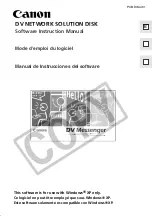
Chapter 35: Encryption Keys
418
Section IX: Management Security
secret. Only the decryption, or private key, needs to be kept secret. The
other name for this type of algorithm is public key encryption. The public
and private key pair cannot be randomly assigned, but must be generated
together. In a typical scenario, a decryption station generates a key pair
and then distributes the public key to encrypting stations. This distribution
does not need to be kept secret, but it must be protected against the
substitution of the public key by a malicious third party. Another use for
asymmetrical encryption is as a digital signature. The signature station
publishes its public key, and then signs its messages by encrypting them
with its private key. To verify the source of a message, the receiver
decrypts the messages with the published public key. If the message that
results is valid, then the signing station is authenticated as the source of
the message.
The most common asymmetrical encryption algorithm is RSA. This
algorithm uses mathematical operations which are relatively easy to
calculate in one direction, but which have no known reverse solution. The
security of RSA relies on the difficulty of factoring the modulus of the RSA
key. Because key lengths of 512 bits or greater are used in public key
encryption systems, decrypting RSA encrypted messages is almost
impossible using current technology. The AT-S63 Management Software
uses the RSA algorithm.
Asymmetrical encryption algorithms require enormous computational
resources, making them very slow when compared to symmetrical
algorithms. For this reason they are normally only used on small blocks of
data (for example, exchanging symmetrical algorithm keys), and not for
entire data streams.
Data
Authentication
Data authentication for switches is driven by the need for organizations to
verify that sensitive data has not been altered.
Data authentication operates by calculating a message authentication
code (MAC), commonly referred to as a
hash
, of the original data and
appending it to the message. The MAC produced is a function of the
algorithm used and the key. Because it is easy to discover what type of
algorithm is being used, the security of an authentication system relies on
the secrecy of its key information. When the message is received by the
remote switch, another MAC is calculated and checked against the MAC
appended to the message. If the two MACs are identical, the message is
authentic.
Typically a MAC is calculated using a keyed one-way hash algorithm. A
keyed one-way hash function operates on an arbitrary-length message
and a key. It returns a fixed length hash. The properties which make the
hash function one-way are:
It is easy to calculate the hash from the message and the key
It is very hard to compute the message and the key from the hash
Содержание AT-S63
Страница 14: ...Figures 14 ...
Страница 18: ...Tables 18 ...
Страница 28: ...28 Section I Basic Operations ...
Страница 58: ...Chapter 1 Overview 58 ...
Страница 76: ...Chapter 2 AT 9400Ts Stacks 76 Section I Basic Operations ...
Страница 96: ...Chapter 5 MAC Address Table 96 Section I Basic Operations ...
Страница 114: ...Chapter 8 Port Mirror 114 Section I Basic Operations ...
Страница 116: ...116 Section II Advanced Operations ...
Страница 146: ...Chapter 12 Access Control Lists 146 Section II Advanced Operations ...
Страница 176: ...Chapter 14 Quality of Service 176 Section II Advanced Operations ...
Страница 196: ...196 Section III Snooping Protocols ...
Страница 204: ...Chapter 18 Multicast Listener Discovery Snooping 204 Section III Snooping Protocols ...
Страница 216: ...Chapter 20 Ethernet Protection Switching Ring Snooping 216 Section III Snooping Protocols ...
Страница 218: ...218 Section IV SNMPv3 ...
Страница 234: ...234 Section V Spanning Tree Protocols ...
Страница 268: ...268 Section VI Virtual LANs ...
Страница 306: ...Chapter 27 Protected Ports VLANs 306 Section VI Virtual LANs ...
Страница 320: ...320 Section VII Internet Protocol Routing ...
Страница 360: ...Chapter 30 BOOTP Relay Agent 360 Section VII Routing ...
Страница 370: ...Chapter 31 Virtual Router Redundancy Protocol 370 Section VII Routing ...
Страница 372: ...372 Section VIII Port Security ...
Страница 402: ...Chapter 33 802 1x Port based Network Access Control 402 Section VIII Port Security ...
Страница 404: ...404 Section IX Management Security ...
Страница 436: ...Chapter 36 PKI Certificates and SSL 436 Section IX Management Security ...
Страница 454: ...Chapter 38 TACACS and RADIUS Protocols 454 Section IX Management Security ...
Страница 462: ...Chapter 39 Management Access Control List 462 Section IX Management Security ...
Страница 504: ...Appendix B SNMPv3 Configuration Examples 504 Security Model Security Level Storage Type SNMPv3 Parameters Continued ...
Страница 532: ...Appendix D MIB Objects 532 ...
















































